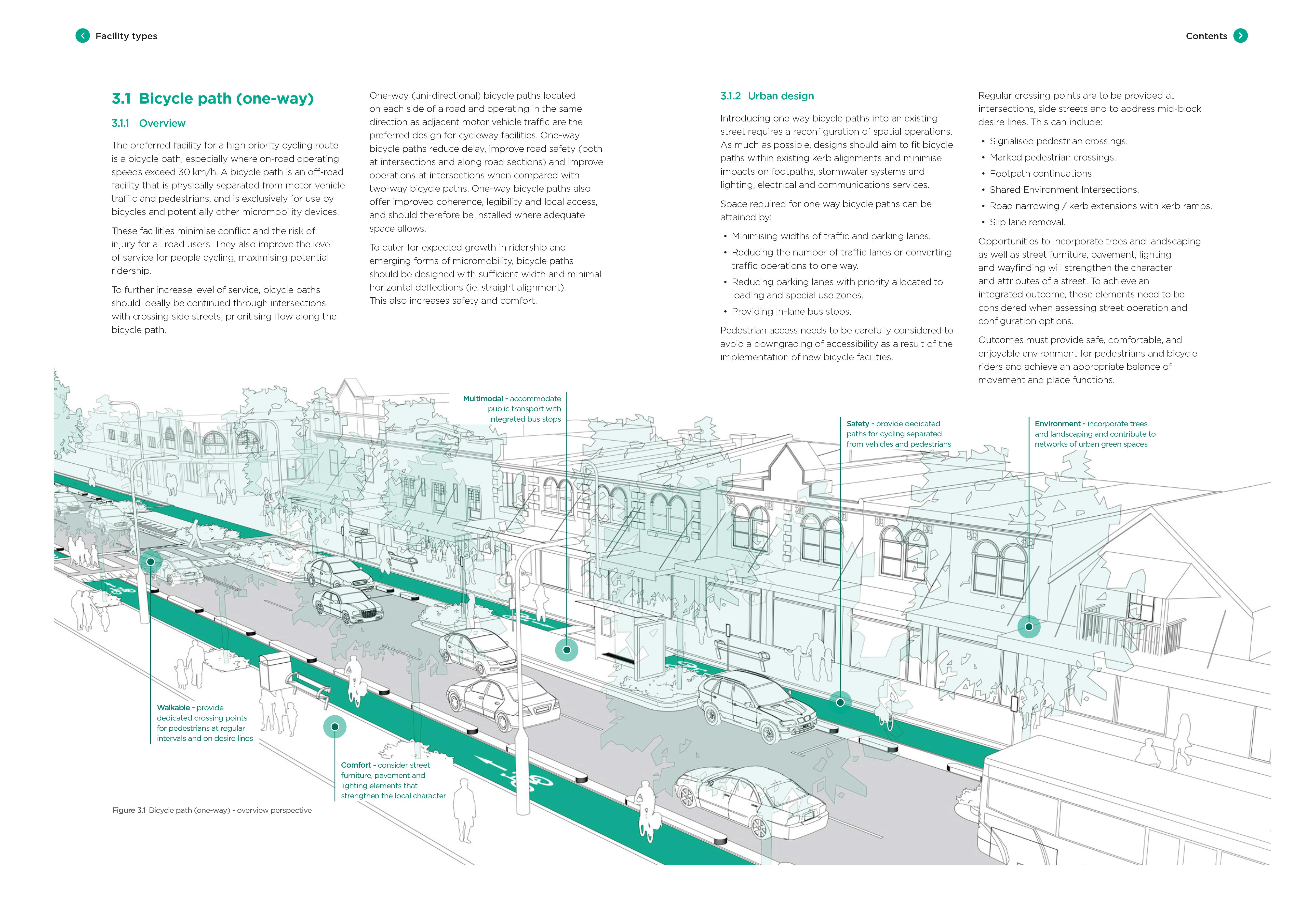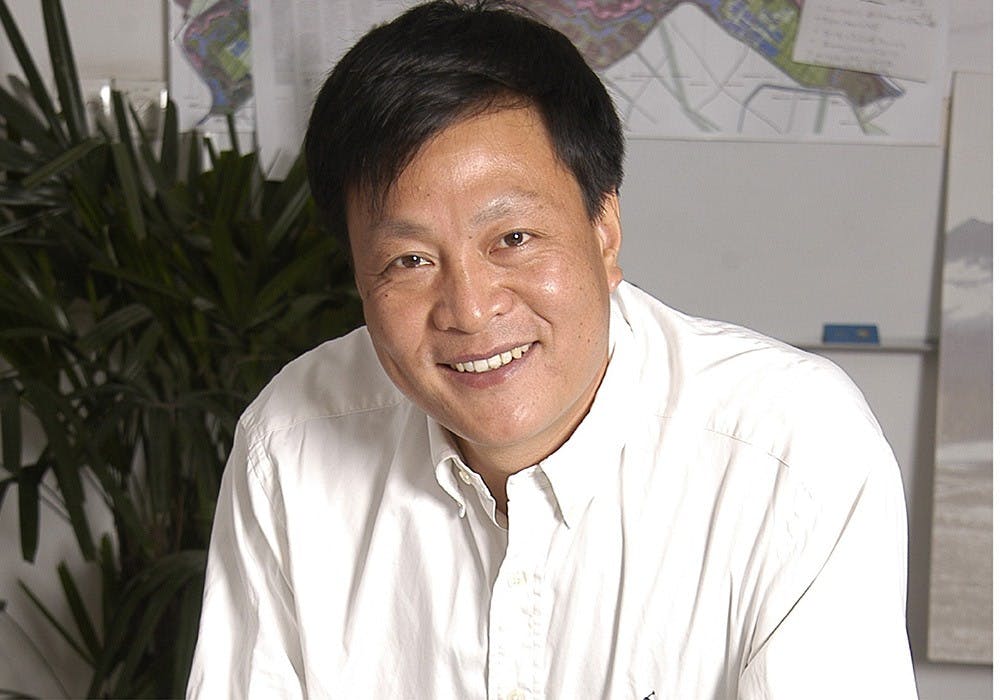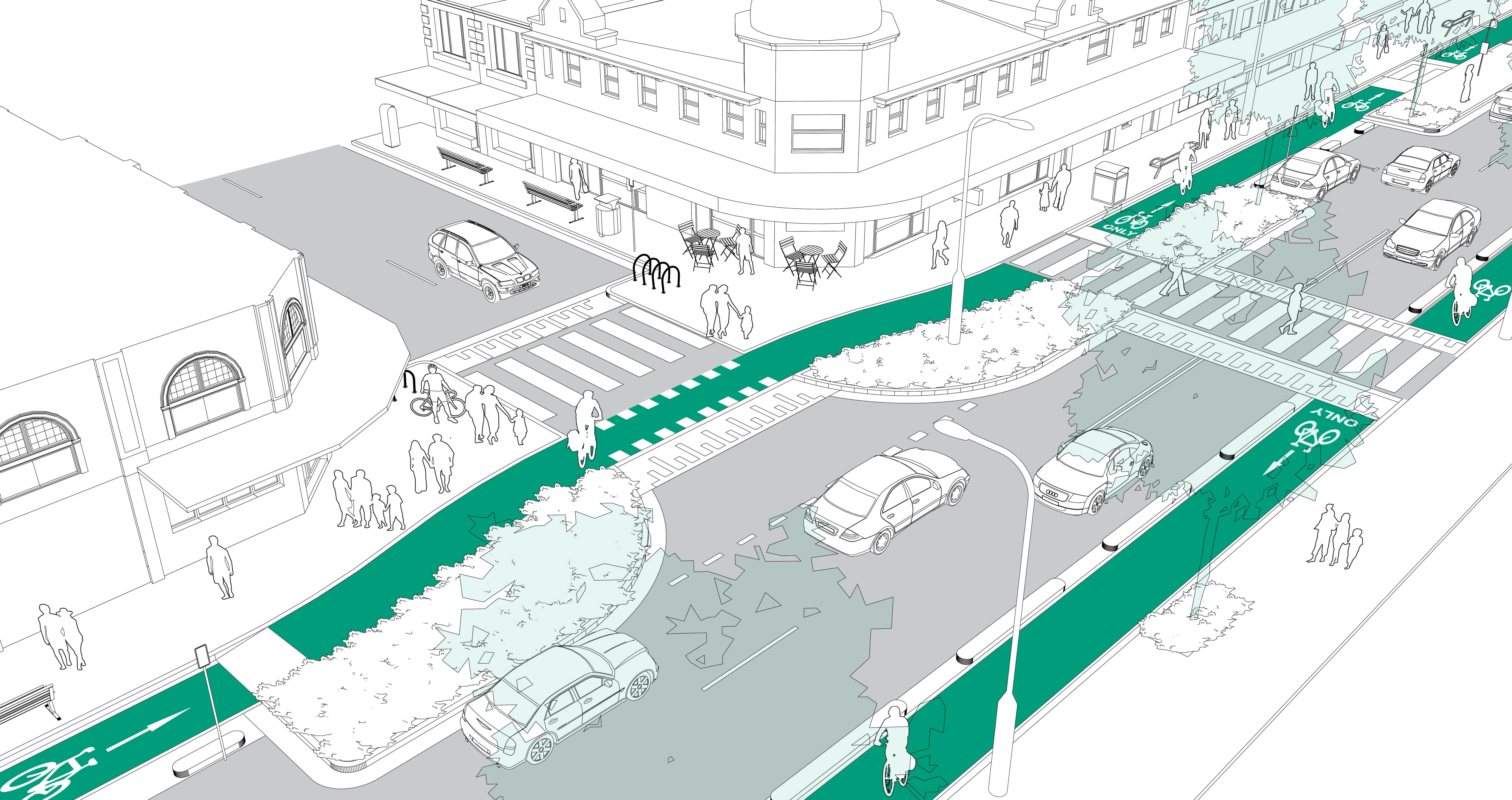
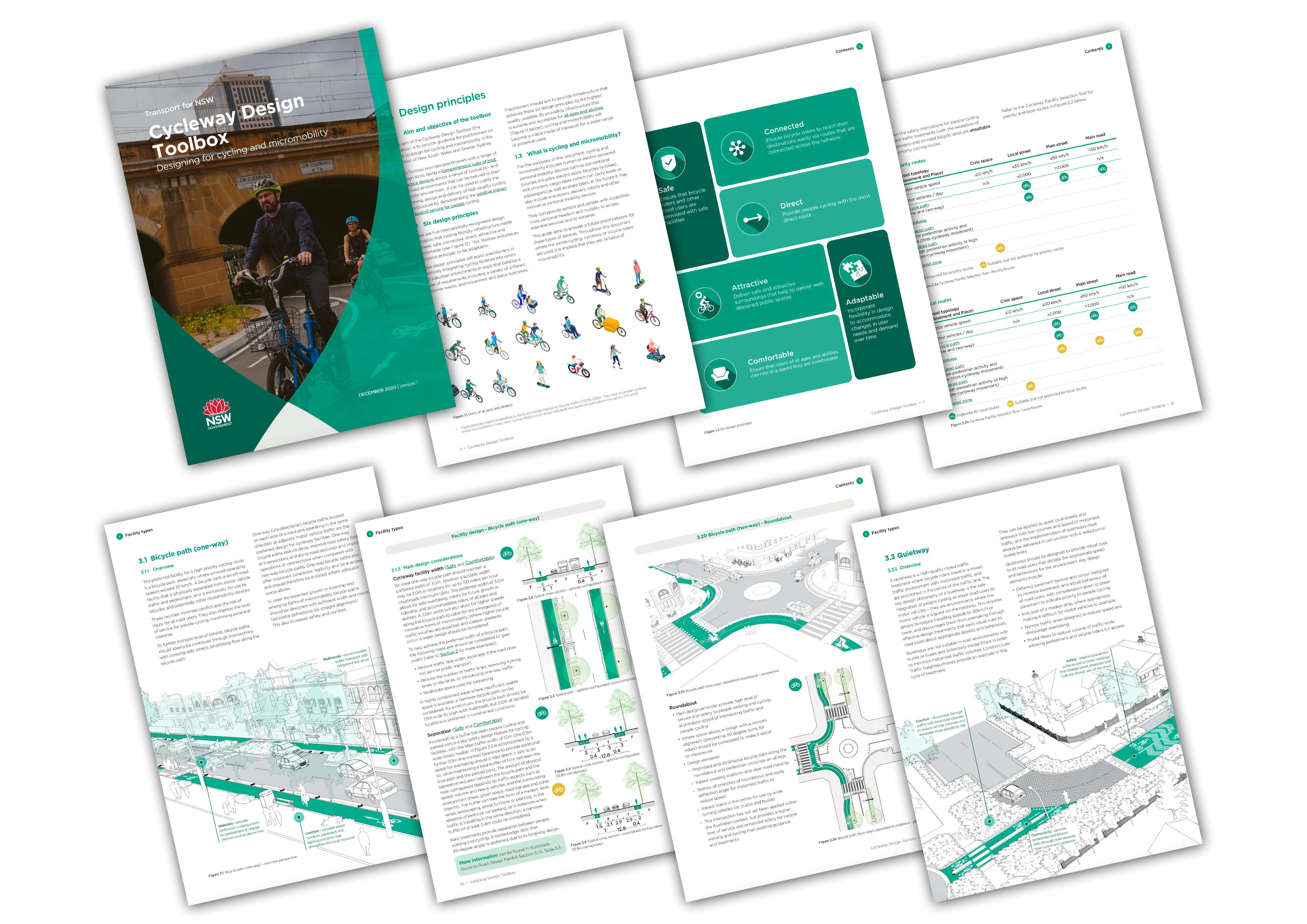
The past decade has seen an exponential increase in the installation of dedicated and shared-space cycleways across Sydney and NSW. These cycleway installations have challenged the successful provision of space in urban environments, where the traditional street has to now accommodate a whole new transport network. This spatial challenge is being addressed today by landscape architects, with the installation of a cycleway often accompanied by general streetscape improvements. Therefore, a design-led approach is required to avoid poor outcomes for street users, businesses and residences that front a street with a cycleway. Furthermore, in 2018 Transport for NSW (TfNSW) released its Future Transport 2056 policy, establishing a 40-year strategy for transport in NSW. Within this policy was a focus on cycling, with a vision for a safe, connected Principal Bicycle Network (PBN) across Greater Sydney by 2056, delivering cycleway networks around the metropolitan centres of Sydney, Parramatta, Western Sydney Aerotropolis and other strategic centres.
TfNSW required a foundational design ‘Toolbox’ to ensure the implementation of a safe, well-connected and easy-to use PBN which would align with Future Transport’s objectives for the role of cycling in Greater Sydney. SMM in association with Aurecon, were selected to deliver the toolbox, with SMM leading the facility design aspect, working closely with Aurecon in developing a holistic set of design tools to support the establishment of safe, well-connected and easy to use cycleways within the future PBN and beyond.
The Toolbox is a document that is unique in urban policy: it addresses both the high level urban design issues of cycleway implementation and also the finer details of actual streetscape design
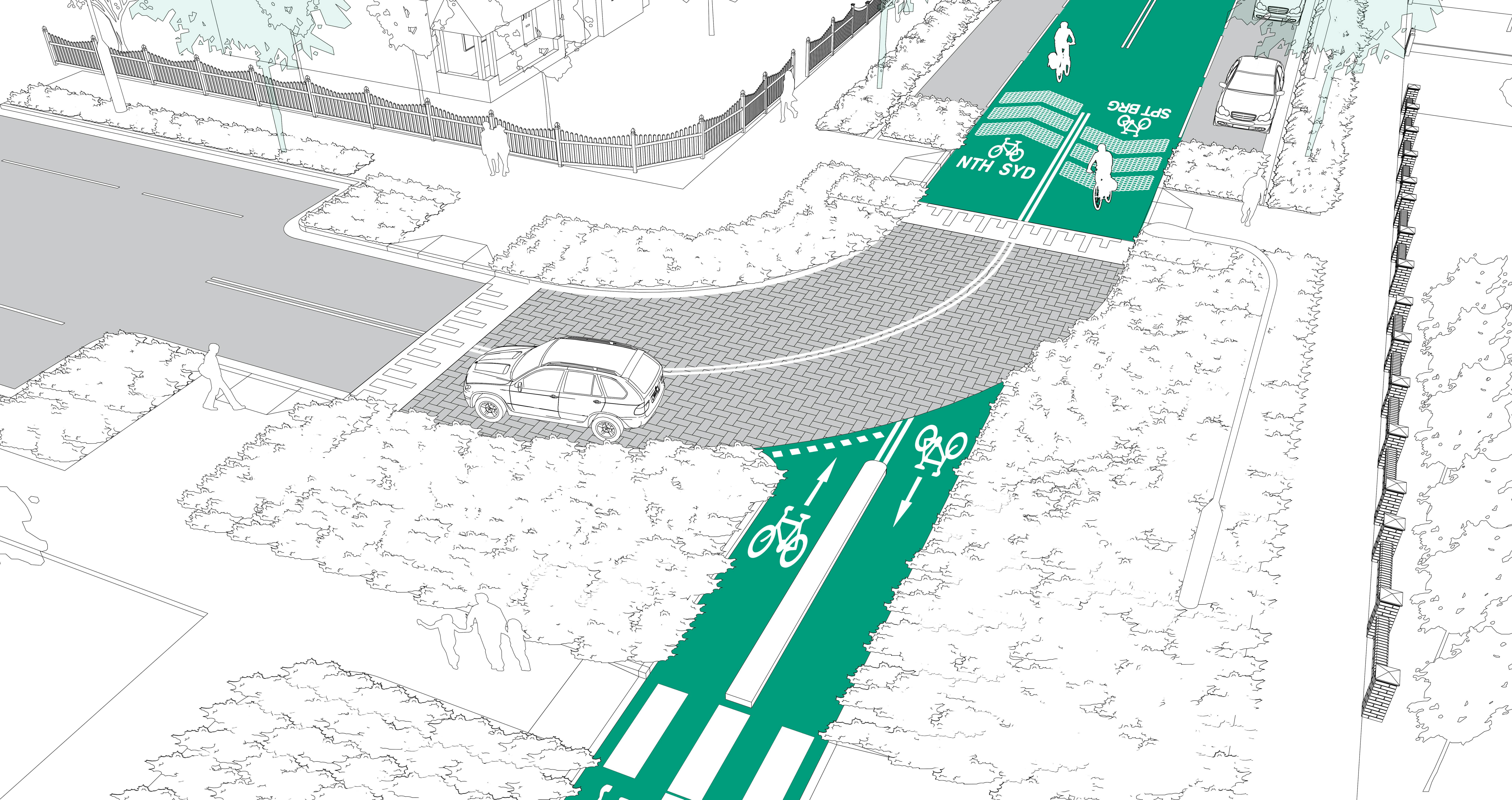
SMM intentionally pushed the brief’s scope to its limits, seeing the Toolbox’s creation as an opportunity to positively influence the design of cycleways across NSW. We saw this project as an opportunity to crystallise years of experience in design-led cycleway design. Leaning on our experience and the many lessons learnt, we sought to clearly convey the best outcomes for cycleway design in space-poor streets. We outlined best-practice design responses to different roadway circumstances that a cycleway designer may encounter across NSW, offering a suite of optimal road and intersection configurations across a range of cycleway facility types, with accompanying design considerations and best practice examples.
Importantly, the document acts as an advocate for good design in our streets. Cycleway design approaches that rely solely on engineered outcomes often do not consider all street users, particularly the complicated interaction of pedestrians, vehicles, cyclists and other micro mobility users. Our toolbox takes these users into account, placing emphasis on design-led cycleway installations which manage the interaction of different users to maximise safety and comfort for all. The toolbox will establish these design-led responses to cycleway design as a new standard, highlighting the pivotal role landscape architects can and must have in the installation of cycleways in streets.
A key challenge was that the Toolbox was to be applicable in many different landscape environments. Therefore, five internationally recognized cycleway design principles were selected as over-arching design strategies: safe, connected, direct, attractive and comfortable. A sixth principle – adaptable – was added as an innovative response to the current Covid environment, and also to help convey principles related to the now popular ‘pop-up’ cycleway installations. These principles acted as philosophical and creative benchmarks during the creation of the document.
From a policy perspective, the Cycleway Design Toolbox will offer designers and policy makers at the state and local level a technical document that will aid in the delivery of well-designed integrated cycleway projects. The document will help ensure the proposed PBN – and any other future cycleway facility - is installed with good outcomes, improving community connection and promoting healthy transport options which largely have a zero-carbon footprint. Importantly, the Toolbox will help facilitate the installation of new cycleway networks, creating viable transport options across socio-economic classes, expanding accessibility to quality social interaction in all areas of Sydney. In aiding the process and the quality of cycleway planning, development, design and installation, the Toolbox will have dramatic effect in the improvement of the day-to-day lives of residents of NSW.
